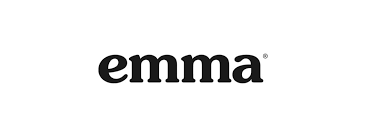In the ever-evolving world of email marketing, choosing the right tool can be as crucial as the content you send out. Today, we’re diving into a head-to-head comparison between two big names in the game: MailerLite and Emma. Both are vying for the crown of ‘Best Email Marketing Tool for 2024,’ but which one truly deserves the top spot? Let’s break down their features, ease of use, performance, and more, so you can make an informed decision for your email marketing needs.
| MailerLite | Emma |
|---|---|
 |  |
| G2 Score – 4.7 out of 5 stars | G2 Score – 4.0 out of 5 stars |
| TrustRadius Score – Score 7.8 out of 10. | TrustRadius Score – 8.6 out of 10. |
Feature Set: A Comprehensive Comparison
A Look at What’s on Offer
When it comes to features, both MailerLite and Emma pack a punch, but they cater to different user needs and preferences.
MailerLite stands out for its simplicity and user-friendly approach. It’s like walking into a cozy café where you know you can get a great coffee without too much fuss. Its features are straightforward, making it an excellent choice for small businesses or individuals stepping into the world of email marketing. With MailerLite, you get all the essentials: an intuitive email editor, a variety of templates, automation tools, and basic analytics to track your campaign’s performance. It’s the kind of tool that gets you up and running quickly, without the need to navigate through complex settings or features.
On the other side, Emma brings a more sophisticated flavor to the table. Think of it as a high-end coffee shop where the menu is filled with exotic blends and unique coffee-making techniques. Emma’s feature set is geared towards mid-sized to larger businesses that need more advanced tools. It offers robust segmentation capabilities, allowing you to target your emails precisely. Its A/B testing features are more advanced, giving you deeper insights into what resonates with your audience. Additionally, Emma provides more detailed analytics, helping you to understand and optimize your email campaigns more effectively.
Tailoring Your Message
Both MailerLite and Emma offer excellent template customization options, but their approaches differ.
MailerLite’s templates are sleek, modern, and easy to customize. Its drag-and-drop editor is a breeze to use, making it simple to tailor your emails without any technical expertise. The templates are designed to be responsive, ensuring they look great on any device. This is particularly useful if you’re short on time but still want your emails to have a professional and polished look.
Emma, in contrast, offers a higher level of customization. Its templates are like blank canvases – you can start from scratch or modify existing templates to fit your exact specifications. This is ideal for brands that have specific design requirements or for those who want their emails to stand out in a crowded inbox. The level of detail you can go into with Emma’s editor is impressive, but it might require a bit more time and design know-how to get the most out of it.
Automating Your Campaigns
The automation of email campaigns is a game-changer in the world of digital marketing, offering a way to efficiently engage with your audience while saving time and resources. Both MailerLite and Emma provide automation features, yet they cater to different levels of complexity and user needs.
MailerLite offers a form of automation that’s akin to a friendly, helpful assistant, always ready to take on routine tasks with efficiency and ease. Its automation features are designed for simplicity and user-friendliness, making it an excellent choice for those new to email marketing or for small businesses with straightforward needs. The process of setting up automated email sequences in MailerLite is intuitive and uncomplicated. You can easily create workflows based on subscriber actions, such as signing up for a newsletter, or based on time triggers, like sending a happy birthday message. This level of automation is perfect for basic to moderately complex tasks, such as welcome email series, follow-up sequences, or regular updates. The beauty of MailerLite’s automation lies in its ability to make email marketing more manageable and less time-consuming, allowing users to focus on other aspects of their business while still maintaining consistent communication with their audience.
Emma, conversely, offers a more robust and intricate level of automation. It’s like having a team of expert marketers at your disposal, equipped to handle complex tasks and strategies. Emma’s automation capabilities are particularly suited for medium to large-sized businesses or for those with more sophisticated marketing strategies. The tool allows for the creation of detailed, multi-step email sequences that can be triggered by a wide range of subscriber behaviors and detailed criteria. This could include actions like past purchases, interactions with previous emails, or changes in subscriber profile information. With Emma, the automation possibilities are extensive, allowing for highly personalized and targeted email sequences. This level of detail and customization in automation is invaluable for creating a more personalized experience for each subscriber, which can lead to higher engagement and conversion rates. For instance, businesses can automate a series of emails tailored to individual subscriber interests, leading to more relevant and engaging content for each recipient.

Related: Check out our free SEO suite

Deliverability and Performance: Ensuring Your Message Reaches Its Destination
The Journey to the Inbox
In the world of email marketing, deliverability is key. If your emails aren’t reaching the inbox, they’re not reaching your audience.
MailerLite has built a strong reputation for its deliverability. Think of it as a reliable postal service that ensures your mail gets delivered come rain or shine. MailerLite maintains high deliverability rates through continuous monitoring and updates to its sending infrastructure. It also offers tools to optimize your send times, which can significantly increase your chances of landing in the inbox and not the spam folder. For small businesses or individuals, this reliability is a huge plus, as it means less worry about whether your emails are reaching your audience.
Emma, meanwhile, is like the courier service that knows every shortcut and backroad to get your package delivered on time. Its sophisticated infrastructure and focus on deliverability best practices mean that your emails have a high likelihood of reaching the inbox. Emma also offers dedicated IP addresses for large volume senders, giving you greater control over your sending reputation. This is particularly beneficial for mid-sized to larger businesses that send a high volume of emails and need to maintain a stellar sender reputation.
Pricing
MailerLite
- Free Plan: For up to 1,000 subscribers and 12,000 emails per month, including basic features.
- Premium Plans: Starting at $10/month for up to 1,000 subscribers, with pricing increasing for more subscribers. Includes unlimited emails, autoresponders, advanced segmentation, and more.
- The premium plan cost varies based on the number of subscribers and additional features chosen.
Emma
- Pricing is typically tiered based on features and list size:
- Pro Plan: Offers automation, segmentation, and analytics. Pricing usually starts at around $89/month.
- Plus Plan: Includes additional features like landing pages and A/B testing. Pricing is higher and usually requires a quote from Emma.
- Enterprise Plan: Custom pricing for advanced needs like custom integrations and dedicated support.
Analytics and Insights: Understanding the Impact
Delving into analytics and insights is like embarking on a treasure hunt. The data you uncover can lead to valuable discoveries about your audience and the effectiveness of your email campaigns. Both MailerLite and Emma provide these insights, but they do so in ways that reflect their distinct user experiences and capabilities.
MailerLite’s approach to analytics is like having a clear, easy-to-read map. It guides you through the essential metrics with simplicity and clarity. When you send out an email campaign using MailerLite, you get immediate access to key performance indicators such as open rates, click-through rates, and subscriber engagement. These metrics are presented in a visually appealing, straightforward manner, making it easy for anyone, regardless of their technical expertise, to understand and interpret. This simplicity is particularly advantageous for small businesses or individuals who may not have extensive experience in data analysis. It allows them to quickly gauge the success of their campaigns and make informed decisions without getting bogged down in complex data analysis. For example, understanding which type of content garners the most engagement can help in fine-tuning future content strategies.
On the other hand, Emma’s approach to analytics is akin to having a sophisticated GPS system with multiple features and capabilities. It provides a more detailed and nuanced view of your email campaign’s performance. Emma offers real-time tracking, allowing users to see how subscribers are interacting with their emails as they are being read. This immediate feedback can be invaluable in making quick adjustments to ongoing campaigns. Additionally, Emma’s advanced segmentation capabilities play a crucial role in its analytics. Users can drill down into specific audience segments to understand how different groups are responding to various aspects of their emails. This depth of analysis is particularly beneficial for medium to large businesses that rely on data-driven decisions to refine their marketing strategies. The ability to analyze performance based on detailed subscriber segments can lead to highly tailored and effective email marketing strategies. For instance, identifying which segments respond best to certain types of calls-to-action can optimize conversion rates.
Integration Capabilities: Connecting Your Tools
The integration capabilities of an email marketing tool can profoundly influence its effectiveness and efficiency. In this digital age, the ability to seamlessly connect and synchronize with other platforms is not just a convenience but a necessity for many businesses. MailerLite and Emma both recognize this need, but they approach their integration offerings in ways that reflect their distinct user bases.
MailerLite, with its ethos of simplicity and user-friendliness, extends these principles into its integration capabilities. It’s akin to a universal remote that’s easy to program and use. MailerLite offers integrations with a variety of popular platforms, such as Shopify for e-commerce, WordPress for content management, and Zapier, which opens the door to countless other apps and services. This range of integration options is tailored to meet the needs of small businesses and individuals who typically rely on a core set of tools for their operations. The integration process itself is designed to be straightforward and hassle-free. Users can easily link MailerLite with their other tools, enabling a smooth data flow that enhances the efficiency of their marketing efforts. For instance, integrating MailerLite with an e-commerce platform can automate aspects of email marketing, such as sending targeted product recommendations based on purchase history.
Emma, on the other hand, approaches integrations with a broader and more comprehensive perspective. It’s like having a high-tech control center that can communicate with a wide array of devices. Emma’s integration options are extensive, covering a wide range of CRM systems, e-commerce platforms, and other specialized tools. This extensive integration network is particularly beneficial for mid-sized to larger businesses that operate with a more complex array of software and systems. The depth and breadth of these integrations allow for more sophisticated and automated data synchronization across different aspects of the business. For example, integrating Emma with a CRM system can enable businesses to create highly personalized and targeted email campaigns based on detailed customer profiles and interactions. This level of integration complexity provides a significant advantage in terms of the granularity and precision with which campaigns can be tailored and executed.
Conclusion
Navigating the world of email marketing tools can be overwhelming, but the choice becomes clearer when you understand your specific needs and the strengths of each platform. MailerLite and Emma both offer compelling features, but they cater to different audiences and marketing requirements.
MailerLite is your go-to if simplicity, ease of use, and a quick setup are your top priorities. It’s perfect for small businesses, startups, or individuals who are new to email marketing. With its intuitive interface, straightforward automation, and a focus on the essentials, MailerLite ensures that you can start your email marketing journey smoothly and efficiently. It’s the tool that gets you up and running without the need for extensive technical know-how, making email marketing accessible to everyone.
On the other hand, if your needs are more complex, involving detailed segmentation, advanced automation, and in-depth analytics, Emma is the tool for you. It’s well-suited for medium to large businesses that require a sophisticated level of customization and control over their email campaigns. Emma’s robust feature set allows for a highly personalized approach to email marketing, catering to businesses that are ready to dive deep into data-driven strategies.
Read Next:
- How to Create a SMART Plan: The Complete Guide
- What is a SMART Plan? And, Why You Need One
- How to Create a Business Plan: The Complete Guide
- How to Create a Digital Marketing Plan: The Complete Guide
- How to Create a Marketing Plan: The Definitive Guide






















Comments are closed.